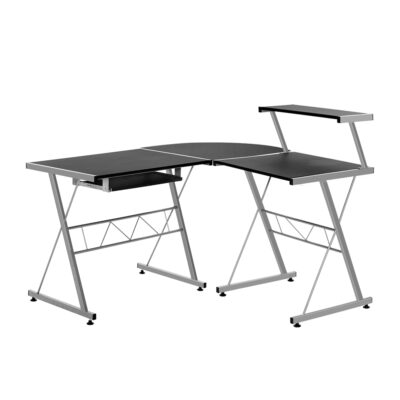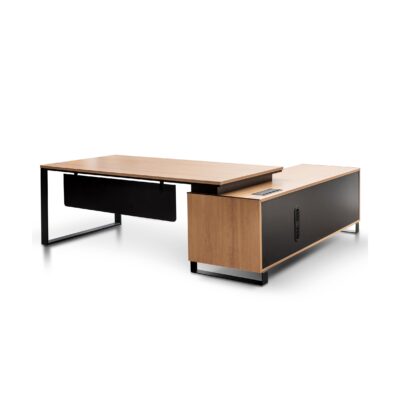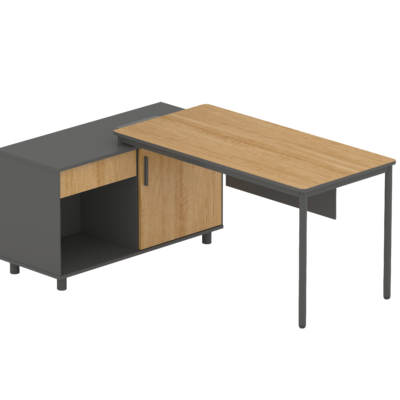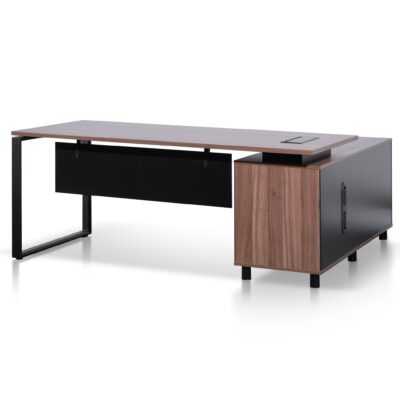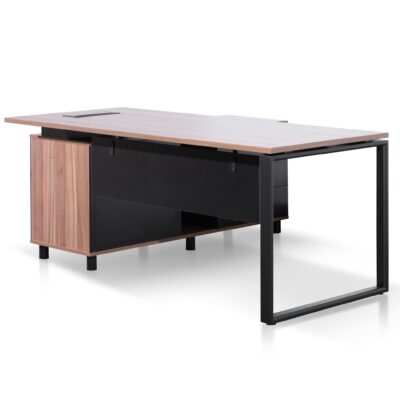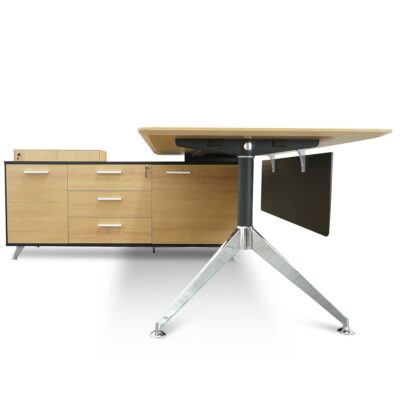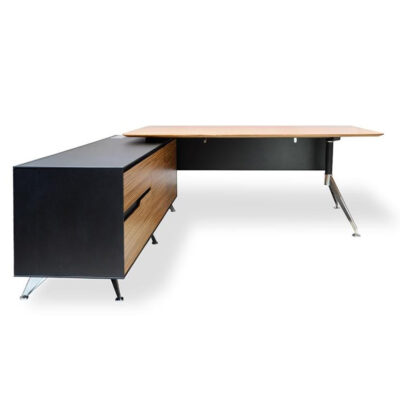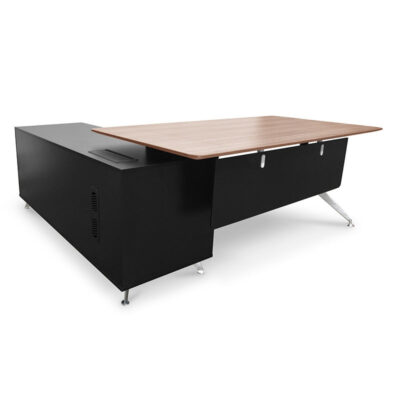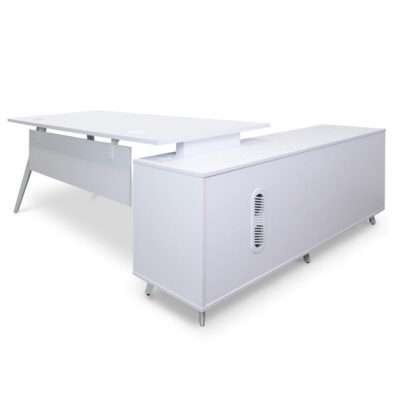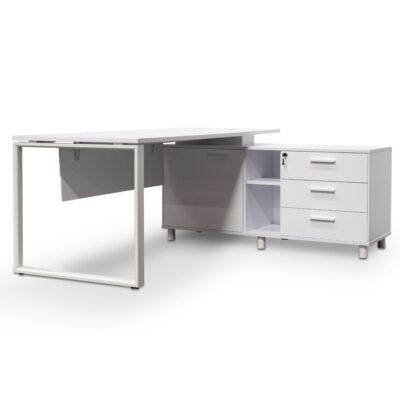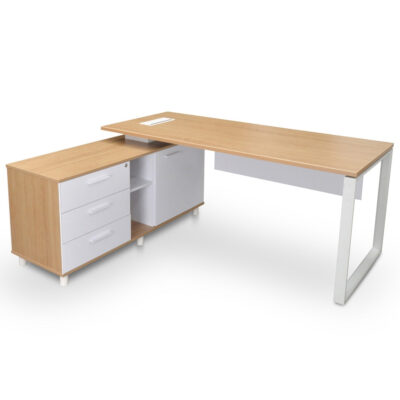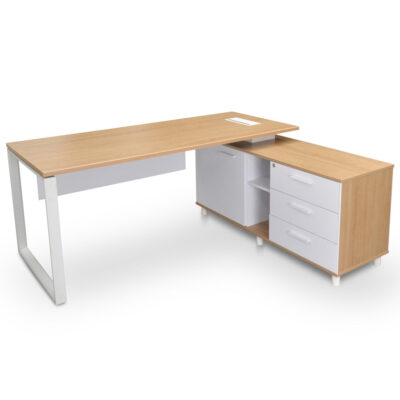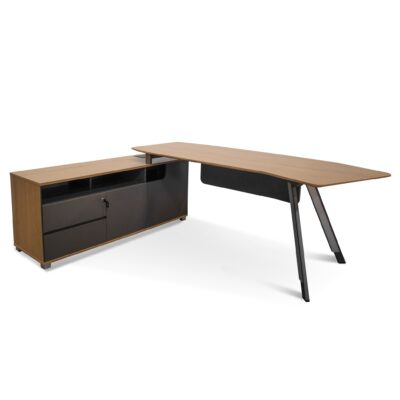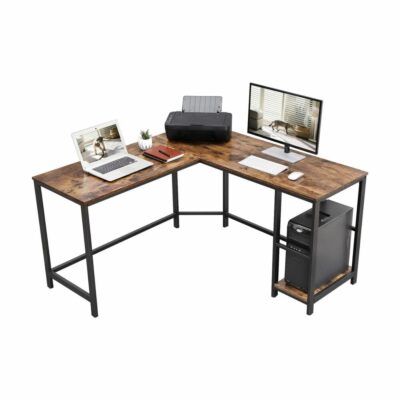Office Corner Desks

Get more working space with office corner desks in a tight space.
Work more efficiently with office corner desks where you have everything within arm length reach, so reduce strains on your shoulders and neck.
Get your office corner desks delivered to you 100% safe and fast delivery, Australia wide.
Showing all 38 results
Frequently Asked Questions on Office Corner Desks
What is an office corner desk called?
An office corner desk is called a “corner desk.” It is a type of desk designed to fit in the corner of a room, maximising space and creating a functional workspace. Many types and styles of corner desks are available, ranging from simple and basic designs to more elaborate options with built-in storage, adjustable height, and other features. Some typical materials used for corner desks include wood, metal, and glass, and they may come in various sizes to fit different room configurations.
Is an office corner desk a good idea?
Are you considering getting an office corner desk? But do you need clarification on whether it is right for you? That's OK.
Below are some advantages and disadvantages of office corner desks. This information will help you to decide.
- Advantages: Space-saving: A corner desk helps maximise your space when you have a smaller or limited floor space.
- Improved organisation: Many corner desks come with built-in storage or shelves. They help keep your workspace organised and tidy.
- Increased productivity: The designated workspace allows you to focus on your work.
Disadvantages:
- Awkward positioning: Depending on the layout of your room, a corner desk may not fit into the space.
- Limited flexibility: You may be unable to reposition your office corner desks to another area of the room.
A corner desk can be an excellent option for many people. If you have limited space, a corner desk is perfect.
What is the difference between L shaped desk and a corner desk?
L-shaped desks and corner desks are similar.
They are both designed to fit into a corner of a room. Below are some differences between the two:
- Shape: L-shaped desks have two perpendicular sections joining to form an “L” shape. Corner desks can come in various shapes, including rectangular, square, and triangular.
- Size: L-shaped desks are larger than corner desks because they have two sections. The size of a corner desk can vary depending on its design.
- Functionality: L-shaped desks have more surface area and storage options than corner desks. The storage may include drawers and shelves. Corner desks are often designed to be more space-saving and may have less storage.
- Placement: L-shaped desks can be in a corner or against a wall, while corner desks fit in a corner.
The main difference between L-shaped and corner desks is their shape and size. L-shaped desks are larger and more functional. Corner desks are often more space-saving and designed to fit into a specific corner of a room.
Is an office corner desk more ergonomic?
An coffice corner desk can be more ergonomic than other types of desks. Here are some ways that a corner desk can be more ergonomic:
- Reduced strain on the neck and shoulders. Your computer screen and other equipment are within reach by turning your chair. So, you do not have to reach far for what you need.
- Better use of space. A corner desk can provide more surface area and allow you to keep your work items within easy reach.
What are the benefits of an office corner desk?
There are several benefits of using an office corner desk, including:
- Space-saving: A corner desk can be an excellent space-saving solution for small rooms or offices. It can fit into the corner, freeing up more floor space.
- Increased work surface: Corner desks offer a larger work surface than traditional desks. It is ideal for people needing more space to spread papers, books, and equipment.
- Better organisation: Corner desks may have built-in storage options such as shelves, drawers and cabinets. So, keeping your work items organised and within reach is easy.
- Improved ergonomics: A corner desk promotes better posture and reduces neck and shoulder strain. It provides a more comfortable and efficient workspace.
- Versatility: Corner desks come in various sizes, styles, and configurations. So, they are suitable for diverse settings, including:
- home offices
- bedrooms
- living rooms, and
- shared workspaces.
An office corner desk is a practical and versatile solution to help you create a more functional, organised, and ergonomic workspace.
Is an L-shaped desk worth it?
Depending on your specific needs and preferences, an L-shaped desk is worth it. Here are some factors to consider when deciding if an L-shaped desk is worth it for you:
- Space: L-shaped desks are generally larger than traditional ones. So, if you have limited space, there may be better options than an L-shaped desk.
- Functionality: L-shaped desks offer more surface area and storage options than traditional desks. If you need a lot of space to spread out your work or if you need to keep a lot of items within reach, an L-shaped desk may be worth the investment.
- Ergonomics: L-shaped desks can be more ergonomic than traditional desks because they allow you to position your computer and other equipment in front of you rather than to the side. So there will be less strain on your neck, shoulders, and wrists.
- Cost: L-shaped desks can be more expensive than traditional desks. You need to consider whether the added functionality and space are worth the extra cost.
An L-shaped desk can be an excellent investment if you need a larger workspace and more storage options. If you have limited space or don't need the added functionality, a small corner desk may be a more cost-effective option for you.
Are L-shaped desks bad for posture?
Like other corner desks, L-shaped desks can be good for posture. Here are some ways that an L-shaped desk can impact posture:
- Screen placement: If the screen is not at the correct height and distance, it can cause neck and shoulder strain.
- Keyboard and mouse placement: If the keyboard and mouse are at the correct height and distance, it can cause wrist and shoulder strain. Your elbows should be at 90 degrees when using your mouse and keyboard.
- Desk height: If the desk is not at the correct height, it can cause neck, shoulder, and back strain.
- Chair: If the chair is not adjustable or does not fit the user's needs, it can cause back, neck, and shoulder strain.
Ensure that an L-shaped desk is suitable for posture. It's essential to set it up correctly.
What is the difference between a left and right-corner desk?
The difference between a left-corner desk and a right-corner desk is the return's orientation or the desk's shorter side.
A left-corner desk has a more extended section on the right side and a shorter section or “return” on the left. This configuration allows the user to have more workspace on the right side of the desk while still having a smaller section on the left for extra workspace or storage.
A right-corner desk has a more extended section on the left side and a shorter section or returns on the right side. This configuration is a mirror image of a left-corner desk. It is suitable for those who prefer to have more workspace on the left side of the desk.
When choosing between a left or right-corner desk, it's essential to consider the layout of your workspace and how you plan to use the desk. Please consider the following factors when choosing the correct desk orientation:
- the location of power outlets
- windows or doors
- and the amount of natural light available.
What's the best corner desk?
There is no one-size-fits-all answer to the best corner desk. The best desk for you will depend on your specific needs, preferences, and budget. But here are some factors to consider when choosing a corner desk:
- Size: Measure where you plan to put the desk and choose a desk that fits the available space.
- Shape: Corner desks come in various forms, including rectangular, L-shaped, and U-shaped. Consider which shape will best fit your needs and the layout of your workspace.
- Materials: You can find corner desks with different materials, including wood, metal, and glass. Consider which material will best fit your decor and durability needs.
- Storage: Corner desks can offer various storage options, including shelves, drawers, and cabinets. Consider how much storage you need and which storage options will work best for you.
- Ergonomics: Make sure the desk is at a comfortable height for you and that it has enough space for your computer and other work-related items.
